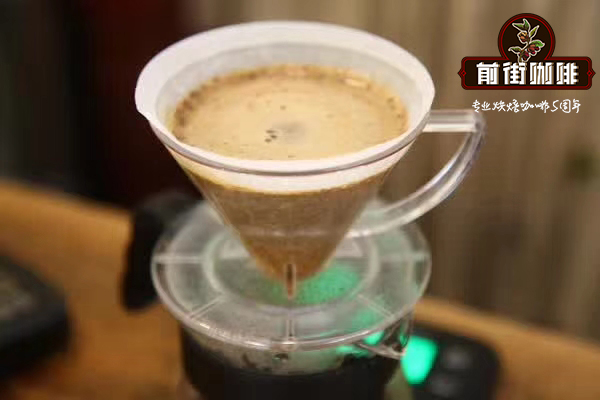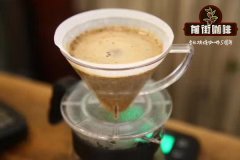Ethiopian coffee producing area introduction The difference between red cherry coffee and Kocher coffee and
There are eight major coffee producing areas in Ethiopia: Lekempti, Limu, Illubabor, Djimmah, Harar, Teppi/Bebeka, Sidamo and Yirgacheffe.
Yegashefi is a small town in Ethiopia with an altitude of 1700-2100 meters. It is one of the highest coffee producing areas in the world and synonymous with Ethiopian fine coffee. Lake Turkana, Lake Abaya and Lake Chamo bring abundant water vapor here. In the rift valley represented by Misty Valley, fog permeates all year round, spring is like all the year round, the breeze is gentle, cool and humid, thousands of coffee trees thrive and multiply, giving birth to the unique fragrance of flowers and fruits of Yejia Xuefei, which is ambiguous and unpredictable.
Initially, Yegashefi's coffee trees were cultivated by European monks (a bit like Belgian monks growing wheat to brew beer), but later by farmers or cooperatives. Coffee trees are naturally scattered in forests and fields and backyards. During harvest season, Ethiopian coffee trading companies would come to town to buy coffee beans collected by farmers and eventually auction them for export under the brand name "Yegashefi."
[Red Peach]
Alert Land Manor--Red Cherry Project
The average planting area of each small coffee farmer here is about 0.6 hectares, composed of hundreds of coffee farmers. Its planting altitude is nearly 2000 meters, the climate temperature difference is large, and the soil is fertile, providing an excellent growing environment. The beans themselves emit a strong aroma of raisins and fermented wine. The near-brown beans are actually small in size, slender, but the weight on the hand is very solid. After baking, we found that the bright berry aroma, or the rich chocolate-like aftertaste, makes this bean have a bright performance whether it is light baked or deep baked.
[Sunlight treatment]
This sun-cured coffee is slightly larger in size and slightly lower in density and moisture content. Each coffee from this plant can be considered a high-quality, refined coffee that exhibits characteristics superior to those of other coffees, and regardless of the treatment used, the beans here can be considered high-quality coffee from the Yega region.
After screening available coffee cherries in the treatment plant, the coffee cherries with intact pulp and peel are placed in an elevated shed for sun treatment. It is this way of putting high-intensity labor into the shed to isolate contact with the ground and prevent the dirt from being produced in the process of sun exposure, thus creating an unusually clean fruit flavor. After more than two weeks of sun exposure, the dark brown coffee cherries are professionally stored while the full flavor ripens. Before shipment, the processing plant will take the coffee beans out of the coffee cherries, sweet feeling can be imagined.
[Kocher]
Kochere is located on a plateau between 1650 and 1800 meters above sea level.
Ethiopia's main harvest season is November and December, and most farmers do not adopt modern farming methods, using artificial care of coffee trees, and using harmful pesticides or herbicides. As a result, almost all coffee produced in Ethiopia is organic by default, certified or not, and the combination of original growing methods and precision processing has made the region known worldwide for its coffee. Neko farmers say: This time because there is no time to prepare, but the next harvest will be ready to certify RFA organic certification.
[Water washing treatment method]
Wash-treated coffee requires more resources (water) than solarization, resulting in higher-quality green beans. The beans are spread out on a drying table for good ventilation, and they are turned regularly to avoid over-fermentation.
cup test contrast
[Red Cherry] Cup test: fermented flavor, citrus, lemon, salary, grape, oolong, berry, floral, caramel.
[Kocher] cup test: citric acid, green tea sense, citrus, jasmine, orange, nut, floral.
Smart cup brewing contrast
Brewing parameters: 15g powder/BG-5R/1:15/90℃
Brewing method: directly fill water to 225 grams, wait 3 '45 "seconds, strain into the sharing pot, remove when you see the powder bed, end time 4 minutes.
[Red Cherry]: lemon, licorice, citrus, berry, sweet orange, overall sweetness is high, sweet back has caramel, cream flavor, aftertaste with black tea aroma.
[Kocher]: lemon, flower fragrance, orange, sucrose, overall clean and refreshing, sweet back with honey flavor and oolong tea aftertaste.
From the brewing flavor, the overall taste of [red cherry] is more mellow, and the sweetness is higher than that of [Kocher]; while\is clean and refreshing, sour and lively, slightly lower sweetness, and rich in fruit flavor.

Important Notice :
前街咖啡 FrontStreet Coffee has moved to new addredd:
FrontStreet Coffee Address: 315,Donghua East Road,GuangZhou
Tel:020 38364473
- Prev
Flavor characteristics of Ethiopian Rosa Coffee Bean introduction to the Source Grade of Chaka Coffee varieties in Rosa Village
The story of Rosa Village lies in the remote and vast eastern part of the African continent, the westernmost tip of Ethiopia, the well-known birthplace of the world's coffee, and just a few kilometers from the border with South Sudan, lies an ancient, dense pristine jungle. The scenery here is breathtaking and breathtaking. 2007,
- Next

Flavor characteristics of Genesis microbatches in Costa Rica and description of the processing plant
[Costa Rica Genesis Microbatch] Country: Costa Rica Region: Western Valley Processing Plant: Finca Genesis Microbatch Processing Plant Altitude: 1700 m Variety: Kadura/Kaduai Grade: SHB Processing Method: Introduction to Solarization Processing Plant Piedades Alajuela is located in the well-known western valley production area, planted at an altitude of about 1700 m to grow Kaduai.
Related
- Detailed explanation of Jadeite planting Land in Panamanian Jadeite Manor introduction to the grading system of Jadeite competitive bidding, Red bid, Green bid and Rose Summer
- Story of Coffee planting in Brenka region of Costa Rica Stonehenge Manor anaerobic heavy honey treatment of flavor mouth
- What's on the barrel of Blue Mountain Coffee beans?
- Can American coffee also pull flowers? How to use hot American style to pull out a good-looking pattern?
- Can you make a cold extract with coffee beans? What is the right proportion for cold-extracted coffee formula?
- Indonesian PWN Gold Mandrine Coffee Origin Features Flavor How to Chong? Mandolin coffee is American.
- A brief introduction to the flavor characteristics of Brazilian yellow bourbon coffee beans
- What is the effect of different water quality on the flavor of cold-extracted coffee? What kind of water is best for brewing coffee?
- Why do you think of Rose Summer whenever you mention Panamanian coffee?
- Introduction to the characteristics of authentic blue mountain coffee bean producing areas? What is the CIB Coffee Authority in Jamaica?

